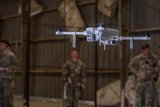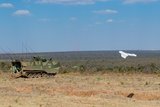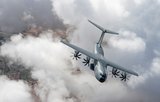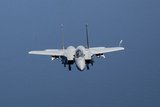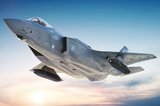US Army cancels FTUAS and the MQ-1 Gray Eagle as part of the Army Transformation Initiative
The Aerosonde Mk 4.8 Hybrid Quad (HQ) FTUAS is a tactical drone purpose-built to meet the US Army's Future Vertical Lift requirements (Photo: Textron)
FTUAS to be scrapped
Last week, Sen. Jack Reed (D-R.I.), the US Senate Armed Services Committee’s ranking member, stated that the Army had announced its intent to cancel the Future Tactical UAS (FTUAS) effort. The revelation came during a committee hearing to consider the nominations of Michael Obadal to be undersecretary of the Army.
The news of the planned ending of the FTUAS effort came one week after, on 1 May 2025, the US Army announced the Army Transformation Initiative (ATI). This strategy will, among other things, re-examine all requirements and eliminate waste and obsolete procurement programmes, with the Letter to the Force: Army
Already have an account? Log in
Want to keep reading this article?
More from Air Warfare
-
![Dubai Airshow 2025: Airbus reveals progress on drone mothership plans for A400M]()
Dubai Airshow 2025: Airbus reveals progress on drone mothership plans for A400M
Airbus is working to expand the mission capabilities of its A400M aircraft, including a 40t payload increase, to boost Europe’s defence capabilities.
-
![How are next-generation ejection seats helping pilots when they need it most?]()
How are next-generation ejection seats helping pilots when they need it most?
The ACES 5 ejection seat from RTX’s Collins Aerospace introduces new, innovative and patented technologies to help save lives.
-
![Dubai Airshow 2025: Embraer strengthens C-390 UAE bid with completion centre plans]()
Dubai Airshow 2025: Embraer strengthens C-390 UAE bid with completion centre plans
The proposals, along with a recent MoU signed with local industry, move the company another step forward in its bid to replace the UAE’s ageing transport aircraft.
-
![Viper Shield electronic warfare suite for F-16s enters low-rate initial production]()
Viper Shield electronic warfare suite for F-16s enters low-rate initial production
The L3Harris Viper Shield is seen as a key component in keeping the newest generation of F-16s up to date and providing a retrofit capability to earlier aircraft.
-
![Dubai Airshow 2025: Boeing emphasises uncrewed teaming capability plans for F-15EX]()
Dubai Airshow 2025: Boeing emphasises uncrewed teaming capability plans for F-15EX
The F-15EX is being promoted by the manufacturer as an ideal platform to pair with uncrewed systems.
-
![Could the Middle East be the next target for the F-35A?]()
Could the Middle East be the next target for the F-35A?
The Pentagon has indicated a growing willingness to export advanced US defence technology to nations in the Middle East – excluding Israel – resulting in new and resumed talks with Saudi Arabia and Turkey respectively.







